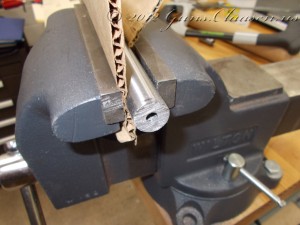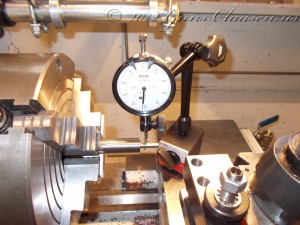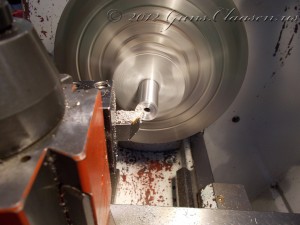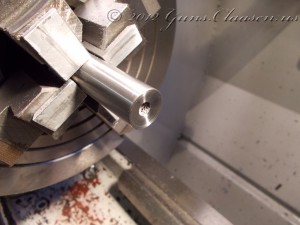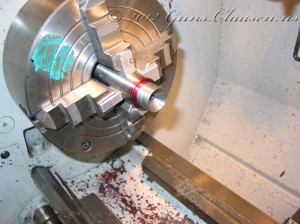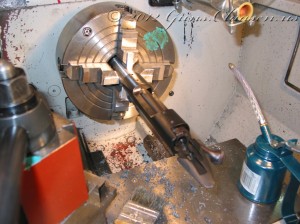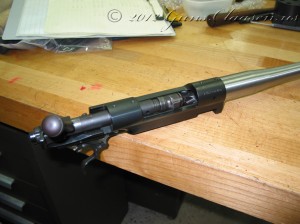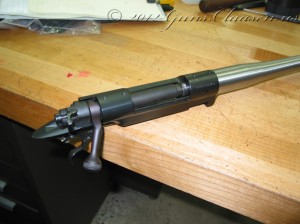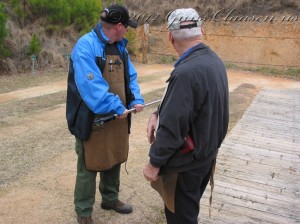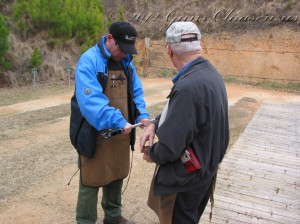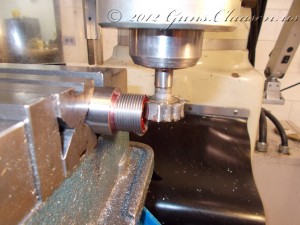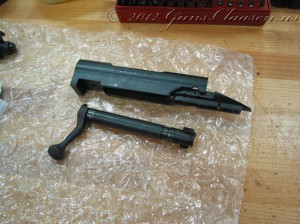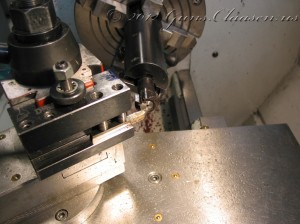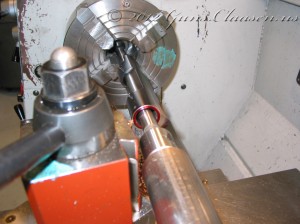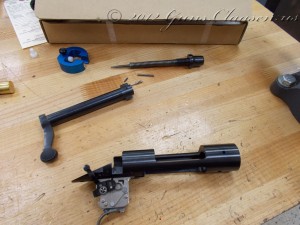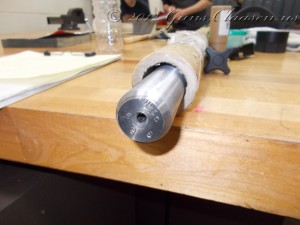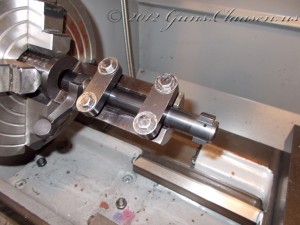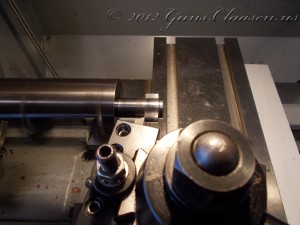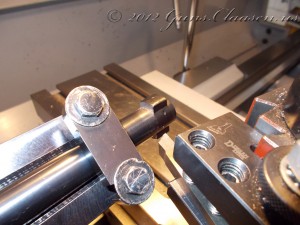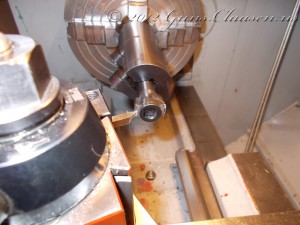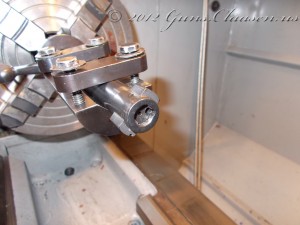Posts Tagged ‘FN’
 FN SPR: Barrel
FN SPR: Barrel
I took a short break from updating the blog since it is the only break I will get before my summer semester. I have not been idle and took a few short courses during the break. But now we need to look at the FN project again.
The setup work on the barrel is a repeat of everything that I did for the Mauser and Remington projects. After centering the barrel in the lathe, I cut the tenon and threaded the barrel to fit the receiver. The next step was to cut the cone for the bolt.
With the cone completed, I cut the chamber in the barrel. This rifle is chambered for .243 Winchester. I tightened the action onto the barrel and it is now ready for test fire.
- Time to do the test fire!
I am pleased with the test fire results. Case expansion on this rifle was 0.0005″ (12.7 microns/0.0127 mm). The final step of the barrel process is to cut the groove for the extractor. I marked the location of the barrel relative to the action, removed the barrel and set the barrel in a mill to cut the extractor slot.
After I completed the cut, I re-assembled the action and barrel and verified the headspace and made sure the extractor works.
The only work left for the barrel is to do the crown. I will cover that in the next post on this project. As always, thank you for reading.
 FN SPR project: Blueprinting
FN SPR project: Blueprinting
It is time to talk and show some of the work I have done on my third (required) project this semester. The FN Special Purpose Rifle (SPR) is essentially a pre-64 Winchester 70 action. We managed to get a good group deal on these and I ended up buying 2 of these. One (this one) I will keep as a complete rifle as it will be part of my portfolio. At some stage, I will complete the second rifle and sell it. I will chamber this rifle in .243 Winchester and I will make a laminate stock for it.
As with the Mauser and Remington projects, I start by blueprinting the bolt and receiver. I trued the bolt face first.
I also had to true the bolt lugs. No picture of that but the process is the same as for the Mauser bolt. I then trued the front of the receiver.
The only other step needed on the bolt and receiver was to lap the bolt to make sure there is full contact between the bolt lugs and the receiver. In my next post I will show the process of cutting and chambering the barrel.

